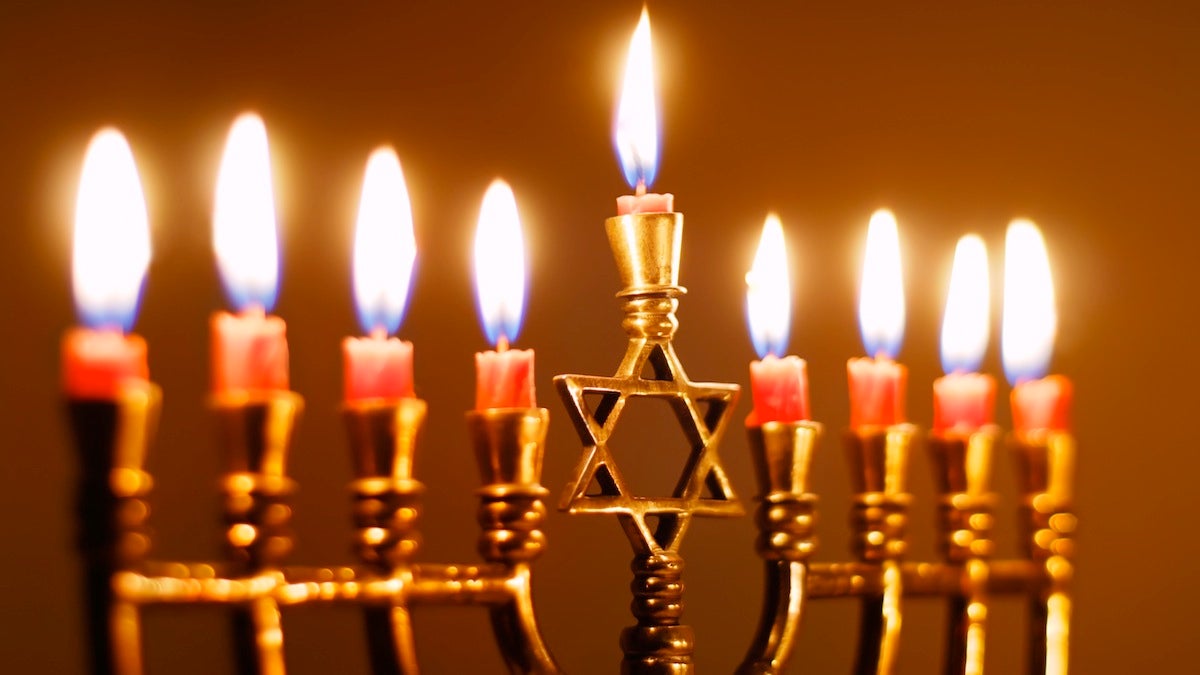How Hanukkah made Jews American
Listen Shutterstock " title="shutterstock_110739182" width="1" height="1"/>
Shutterstock " title="shutterstock_110739182" width="1" height="1"/>
Courtesy of Shutterstock
“Merry Christmas . . . and Happy Hanukkah.”
Wherever I go this time of year—the subways, the streets, and especially the stores—I hear that phrase. And it’s music to my ears, even when I detest the tacky holiday music that so often accompanies it.
That’s because Hanukkah is now a part of America. Indeed, Jews seized upon this holiday of miracles in order to read themselves into the American story. And that makes for a pretty miraculous story, in and of itself.
In traditional Judaism, Hanukkah was a minor festival. It’s mentioned briefly and rather cryptically in the Talmud, Judaism’s canon of religious law and commentary. After a band of Jewish rebels called the Maccabees expelled Greek occupiers from their temple, the rebels kept it lit for eight days with a single day’s worth of oil. Hence the eight candles, the eight nights of celebration, and yes, the eight presents.
And here in America, as historian Dianne Ashton has shown, present-giving was an effort by Jewish families to compete with a much bigger national holiday: Christmas. “We must do something to enliven the children,” Cincinnati rabbi Max Lilienthal wrote in 1876. “They shall have a grand and glorious Chanukah festival nicer than any Christmas festival.”
So Jews staged dramatic Hanukkah pageants, replete with Maccabees in battle armor, to rival Christian plays of Baby Jesus in the manger. And they started to give presents, of course, so their kids didn’t feel deprived when December rolled around.
Indeed, “presents” was one of the first English words to appear in America’s Yiddish-language press. European Jews had given coins or “gelt” to children at Hanukkah, but the kids were supposed to present them in turn to their teachers. In America, a land of almost unimaginable abundance, parents could shower the children with toys, clothes, and sporting goods.
And that could be a bad thing, critics worried, if it blinded Jews to the religious meaning of Hanukkah. “We do not want death from pleasure!” one Yiddish paper warned, even as its pages groaned with department store advertisements for holiday gifts. Just as the Maccabees rededicated the temple after liberating it (Hanukkah derives from the Hebrew verb “to dedicate”), so were Jews urged to to remember their forefathers’ faith and heroism.
But here, too, the Hanukkah appeal received a distinctly American gloss. Jews frequently linked the Maccabees’ revolt to the American Revolution, which had also repelled a foreign occupier. In Cincinnati, Rabbi Lilienthal even suggested that the Maccabees began their own rebellion with the battle cry “Give me liberty or give me death,” the same challenge uttered by Patrick Henry.
Other Hanukkah celebrants said the Maccabees’ story prefigured modern Zionism, the movement to establish a Jewish nation in Palestine. Still others saw it as a forerunner of socialism, which would “purify the entire human spirit of greed, bloodlust, and power” just as the Maccabees purified their house of worship.
During World War II, Hanukkah became a parable for the fight against Nazi anti-Semitism and genocide. And after the war, as more details of the Holocaust emerged, the holiday reminded American Jews that they could maintain their identity even in the face of “numerous attempts to annihilate us,” as one Minnesota rabbi wrote. Like the Hanukkah story itself, he added, Jewish survival was “nothing short of a miracle.”
In the 1950s and 1960s, some Jews fretted that postwar affluence would bury their identity in a bland haze of shopping malls and suburban tract houses. So they urged co-religionists to preserve Hanukkah rituals and to resist Christmas ones—especially the acquisition of a holiday tree. “Let the light from the menorah strengthen our Jewish pride,” a women’s group pleaded, warning families against bringing Christmas trees into their homes.
But some Jews set up trees nevertheless, giving them a distinctive name: Hanukkah bushes. And as Jewish intermarriage soared in the 1980s and 1990s, more and more families fused holiday elements from different faiths. A popular sale item this season is the “menorah tree,” featuring pine garlands wrapped around candle holders. Another is the “mensch on a bench,” a Jewish doll that echoes—but also satirizes—the “elf on the shelf” in Christian homes.
And in my own home, we have both a menorah and a tree. We light the candles on all eight nights of Hanukkah, but we mostly reserve presents for Christmas Day. We’re one of those jumbled, multi-faith American families, and we’re mixing and matching as we go along.
WHYY is your source for fact-based, in-depth journalism and information. As a nonprofit organization, we rely on financial support from readers like you. Please give today.

